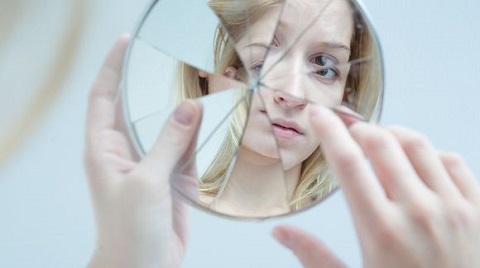Body Dysmorphic Disorder
Body dysmorphic disorder, or dysmorphophobia, is a pathological mental condition that is manifested by excessive concerns about minor body defects. This disease usually begins in young people and adolescences. It is interesting, that this psychiatric disorder affects men and women equally, although it is commonly believed that women are always more sensitive to the imperfections in their appearance.
The patients who suffer from body dysmorphic disorder always feel unsatisfied with their own selves. They keep complaining about the defects that they have. They believe that these defects make them "peculiar" in a negative sense, although the "peculiarities" are not that bad as they imagine (or not bad at all).
Dysmorphophobia is a sure factor to deteriorate the quality of life by developing complexes and low self-esteem. Severe forms of body dysmorphic disorder lead to serious depressive conditions and suicidal thoughts. Some patients get so much depressed that they cannot get up from the bed. Their behavior and reaction on the surroundings and events may become inconsistent, uncontrolled and hysterical.
Causes of body dysmorphic disorder
 Dysmorphophobia has a multifactorial nature. Thus, there are many reasons that cause the development of this disease:
Dysmorphophobia has a multifactorial nature. Thus, there are many reasons that cause the development of this disease:
- Violation in neurotransmitters production and function. Recent examinations of the patients showed low serotonin, dopamine and gamma-aminobutyric acid. The low production of "mood hormones" may trigger the development dysmorphophobia;
- Genetic predisposition. Scientific researches have proved that some genes can cause predisposition to dysmorphophobia;
- Obsessive-compulsive syndrome. Patients with this syndrome always follow certain rituals or rules. Any deviation from the norm can lead to severe mental disturbances in them;
- Anxiety. A person who is constantly uneasy about anything, including appearance, is more exposed to body dysmorphic disorder;
- Pathologies related to visual perception. As a rule, patients with dysmorphomania perceive and process visual information incorrectly;
- Psychological factors. Teasing in childhood, improper education, sexual trauma, modern fashion and beauty standards play a great role in the formation of this mental disorder;
- Individual characteristics of a person. Most often, dysmorphophobia develops in insecure people, introverts, perfectionists. In some patients, the syndrome of dysmorphophobia occurs against neurosis or psychopathy.
Treatment
No matter what factor causes the disease, the treatment is always based on psychological therapy. Depending on the severity of the condition, antidepressants or anxiolytics can be prescribed to improve the treatment results. Some patients undergo hypnotherapy.